Interview
Interview: Emily Marbach
In conversation with painter, printer and collage artist Emily Marbach.
Emily has been a big support for me doing these interviews, and recently emailed to say she’d joined The Sketchbook Project at The Brooklyn Art Library – so thank you for all your support and hope that goes well, and if I have helped in some small way, then I am very humbled.
Emily is part self-taught and part taught through painting classes at the Westminster Adult Education Centre and drawing at The Prince’s Art School and print making at Kite Studios. Originally from New York, and now living and working from her home-based studio in London, Emily previously studied English Literature and Education. Emily has also undertaken several online collage courses with Randall Plowman.
Can you talk about your journey into or interest the arts?
I was lucky to grow up across the (Central) Park from the Metropolitan Museum of Art in New York. My parents would walk us over there at least once a month when I was a child. Amongst my sparse childhood memories is having Monet explained to me at a retrospective they had there when I was about ten. I studied ceramics, as part of my liberal arts collage education in the US, while I was living in Tokyo in the early 90’s and when I first moved to London. But pregnancy and standing kick wheels didn’t mix (I’m left handed and they didn’t have electric wheels that went my way). So I turned to painting. There was a little gallery around the corner from me that was showing naive paintings of handbags. I loved them but like much of art that looks simple to make, it is rarely as easy as to replicate it. I bought a few small canvases and tried to do my own versions with minimal success. So I looked around for some local adult education classes and lucked out to find Kitty Stirling teaching painting in a really rigorous and thoughtful way. Once I learned colour theory and mixing I was off to the races. My love affair with art deepened as my abilities increased.
Do you use a sketchbook? I’m interested in what a sketchbook means to you and your work?, or how people develop their ideas.
I wish I used a sketchbook more. I had a new year’s resolution in 2020 to return to my painting practice by September. I’ve been sidetracked by collage and printmaking for far too long. What was supposed to be a minor dalliance became a marriage. But my first love, painting, still needs to be nurtured or I’ll never be able to return to it.
When I was only painting I’d use a sketchbook to try out ideas, save colour mixtures by dabbing different combinations together on the page, take notes. In my printmaking practice I also use a sketchbook to develop ideas. Particularly with lino and collograph, when I don’t sketch an idea first the ultimate design suffers. With lino, where the lines of the picture are white, are the negative space, then without drawing it first, it’s hard to know what to cut out. But unlike a bullet journal, my sketchbook is not a thing of beauty. I’ve seen many artists’ books that are the artwork itself, that have a unique life to the ultimate artworks. Mine are not like that. I have to admit reluctantly, that for me, it’s not about the sketchbook. On the whole, my anti-sketchbook is my notes app on my phone. There I list ideas for works of art, colours, materials, themes etc. I decided to pull out my phone and see what’s there, as I haven’t needed to save ideas for later, during lockdown. Here is a sample, an old list of collage ideas. Please don’t ask me to explain, I can’t.
“Conga lines, Disney lines, Sushi counters, Abbey Road, Glastonbury, Postage stamps, Large Bird Feet, Beaks, Shonagh Rae.”
What themes do you try and explore through your work?
I spent a long time, when I began collaging with painted washy backgrounds, little people and vehicles that I made, to explore silences and conversations. I took urban people to places in the countryside to have private conversations. Sometimes the people left the city to plot something illegal. I’d capture the moments before and after difficult conversations. I’m a very optimistic person so my thought was that through these arguments people would resolve their problems. It’s my observation that adulthood is filled with difficult conversations and one needs to embrace and not fear them.
My next big collage phase was working on the theme of the biblical story of the Israelites’ exodus from slavery in Egypt. This has developed into the Collage Haggadah that I will be publishing this year. That has been an all consuming exploration of the concepts of freedom and slavery through the lens of this thousand year old book.
Can you talk about your process of working. How do you work, how often, is there a particular pattern?
In my pre-Covid life I spent at least three days a week working on my art. Covid cancelled my day volunteering at my local primary school, my choir practices and for a while my printmaking class (Through Kite Studios and my tabletop press, I participate in a zoom class currently). It also cancelled my daytime social and shopping life. What that means is that I am in my home studio working five days a week and occasionally on weekends as well. During this period I have one thing that I can identify as a pattern. I look at collage prompts on Instagram and if I’m not in the middle of sometime from the day before, I will use one of those words (in the case of Februllage Extended) or image (as in the Paris Collage Collective) to get me going. I’m still basking in the freedom from my Haggadah project to paint and printmake lovely and frivolous things like flowers, still lives and handheld tools. But one of these days, if the swimmers don’t grab me back, some new idea will pop into my head and then I’ll be focused again. It always happens. I’m not going to rush into just anything.
Do you find the process of creating work relaxing or therapeutic?
I would say that most of my creative work is relaxing and therapeutic, now that my children have grown up. I started painting when the youngest of my four children was one and now she is twenty. I’m not the tortured artist. Although It took me a long time to learn how to relax in the studio because I always felt that I was there on borrowed time. Perhaps that is why I am not tied to the sketchbook because I was always rushing in full steam ahead to produce and not think that much. My ideas or at least the general concepts come fully formed. I never wonder what to do next, it’s somehow always already there. That isn’t to say that I don’t have failures or what I thought was an amazing idea just didn’t come out right, that happens.
I usually spend many summer weeks at my mother’s house in Connecticut. It’s a special time for me as I live so far away from my family. Obviously, this summer, I won’t be going. I try not to dwell on that but sometimes I wonder if I won’t actually swim this summer at all. Suddenly, I find myself drawing, colouring and pasting swimmers. Some are swimmers, others are cannon-balling, diving, floating, sitting on docks. Every time I try to stick them on a background I hesitate. I have a long history of having a fear of sticking down, particularly with vintage pieces. I can cut up a 1946 Life Magazine but somehow sticking down a cutting from it seems so permanent. My mother suggested that I photocopy the pieces and stick them down first. That would be a great use for a sketchbook. But my swimmers must be part of a therapeutic process of coming to terms with my loss (however privileged a loss it is).
The hashtag Black Collages Matter has been quite helpful in coping with the political situation in America and the death of George Floyd and other murdered African Americans at the hands of the police. Brittany M. Reid pointed out that there aren’t many images of black people in collage and that it’s time to rectify that. I agree. The world of collage looks very white. There isn’t a lot I can do from lockdown besides vote and donate but this seemed like something I could help out with. I recently discovered the collage artist Deborah Roberts’ work and am enthralled.
I feel incredibly lucky that I have a room of my own that welcomes me into its chaos and lets me work. Despite having a creative mind, I actually can’t imagine what my lockdown would have been like. I simply can’t imagine it.

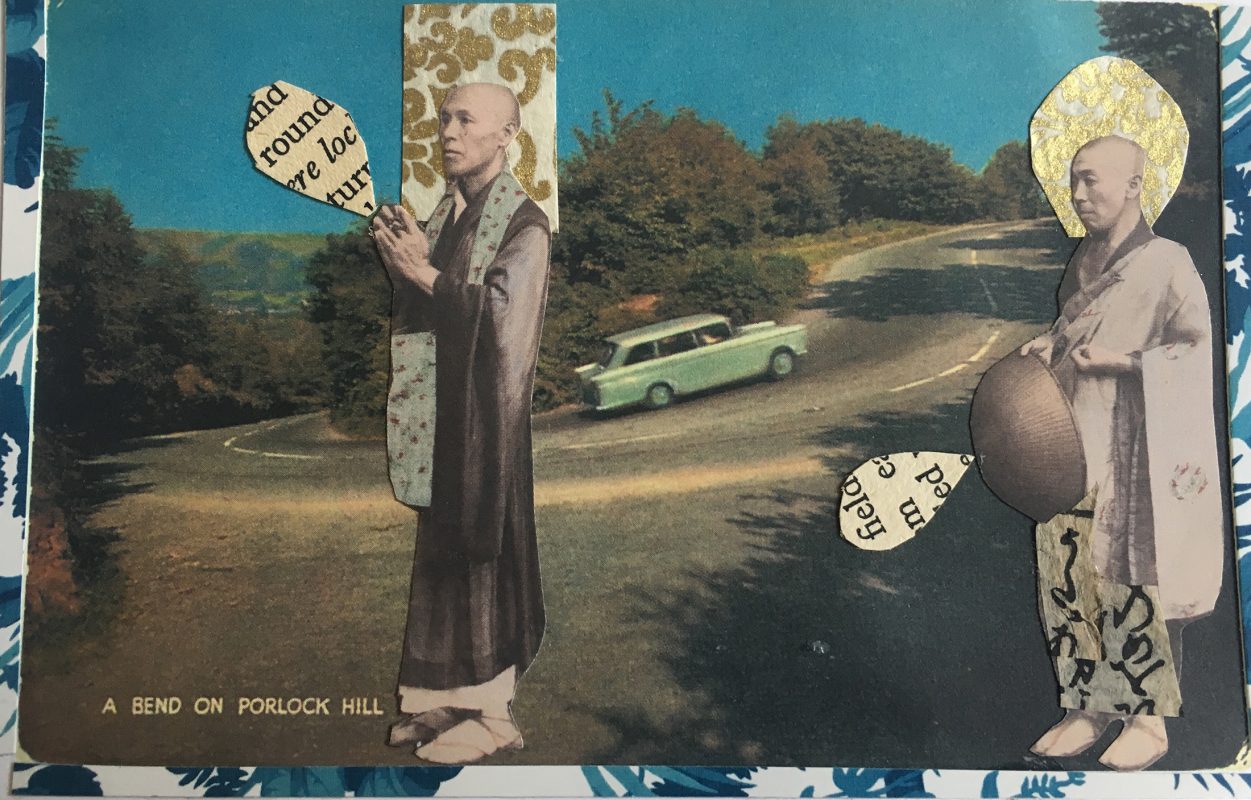
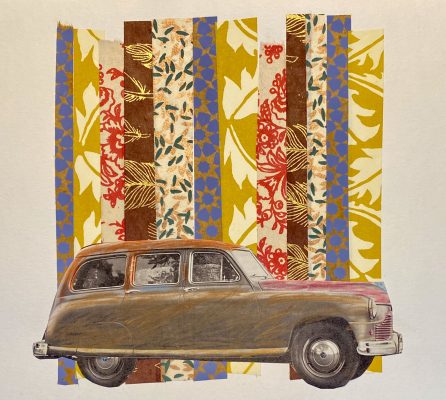
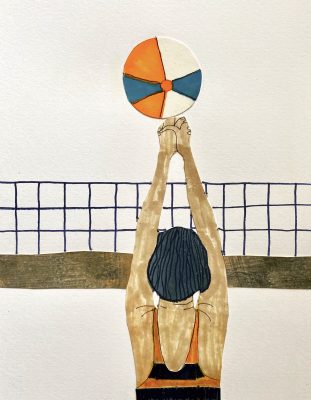
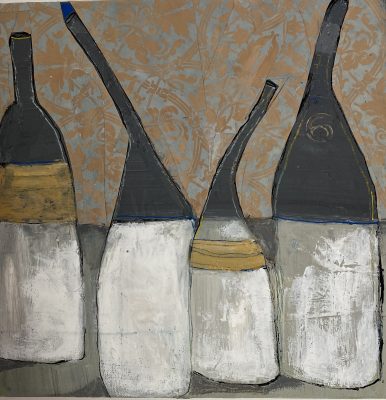
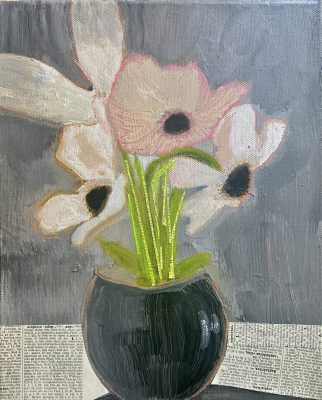
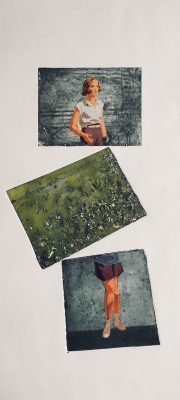
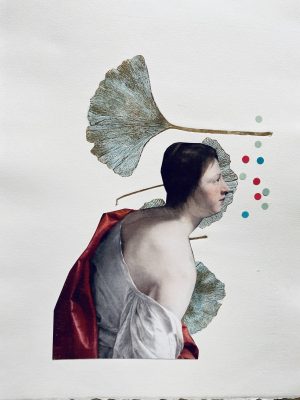
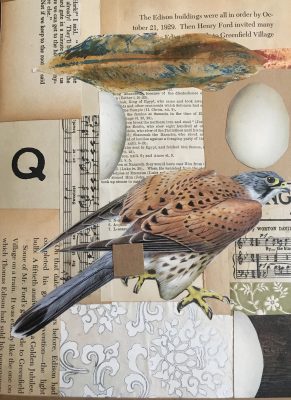
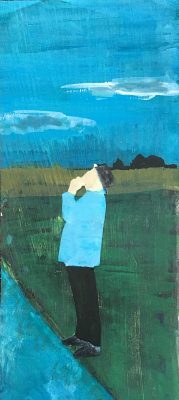
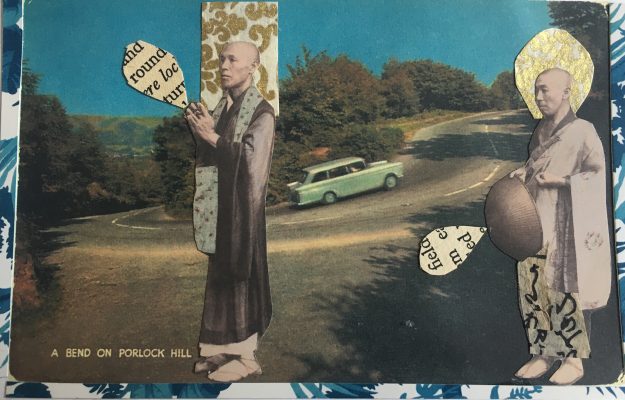
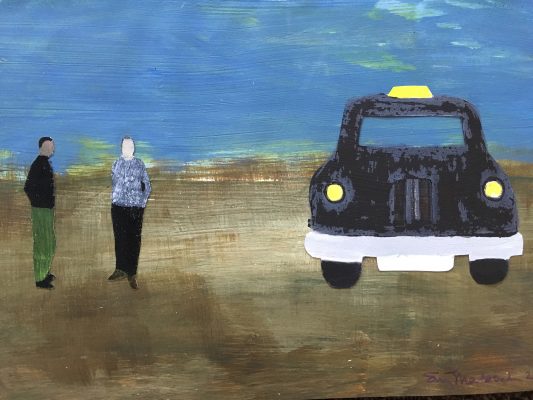
Very beautiful collages especially the flowers and the car. You have such a good eye and sense.
As the mother of the artist, I am extremely proud of Emily’s creative artistic abilities. She is forever bringing new ideas to her artistic endeavors.
Thanks Judith, so nice to hear from a parent of an artist! I’m sure you’ve enjoyed watching Emily’s creative development over the years with pride. We look forward to seeing more from her.